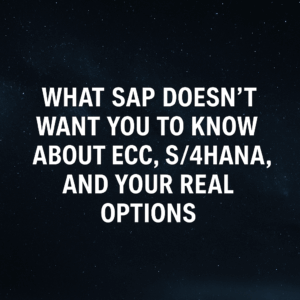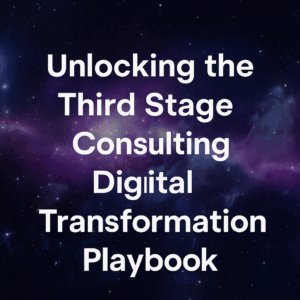The software selection process can be complicated and overwhelming, and it often leads to analysis paralysis and organizational conflict, among other things. Navigating that terrain often requires external, objective help to help guide the process and ensure an organization is focusing on the right things as they vet each system.
It all comes down to gathering the right requirements, enabling project management, and other digital transformation best practices that you can find in our most recent digital transformation report.
Whether you do it yourself or decide to bring in a third-party consultant, these 10 proven tactics can guard your company against risks and pitfalls that come with the software selection process. Follow these vetting tactics when going through software evaluations. Although it may take a little longer, these simple due diligence asks will save money and heartburn in the long run.

10 Tips for Vetting Software Vendors Through the ERP Software Selection Process
- Measure twice, cut once.
- Allow your team the time to do real due diligence upfront. Red flags are ignored many times when the company is hurtling toward a fast decision. A proper selection process can take anywhere from 6-18 months depending on the size and scope. Allow them time and resources.
- Get references.
- Ask to speak to references who are on the same version you are planning to deploy and if it’s on-prem or cloud. Preferably in your industry, size, and with some of the same nuances or challenges you are solving for.
- Probe beyond the surface.
- Ask them to further demonstrate areas where they say “yes, we can do that” This may require mini demonstrations of said functionality and the vendor should be willing and able to accommodate.
- What you see is not always what you get.
- Ask if that functionality they are selling or showcasing (whether it be early in the sales cycle, during demonstrations, etc.) is “out of the box” or requires customization. Ask as many times as you need through various stages until your team feels comfortable that the functionality is or will be there. In addition, ask for details about the time and cost tied to building out the customizations. As well as any recurring fees to maintain the integrations that are built to accommodate those customizations.
- Remember that vendors are selling.
- There may be claims made in the sales process that simply can’t be fulfilled by the professional services team. There have been many companies who have fallen subject to the professional services team being blind-sided by a request, and they can only say that that functionality was not included or that it is the customer’s responsibility. Assume positive intent with your sales representative, but verify everything. Once you sign the contract, there’s no going back.
- Understand the product road map.
- Ask to have someone walk you through their product roadmap. Understand if what they are selling/showing is what will be deployed on your go-live date. Vendors will have their demo environments, websites, and web videos set up to show all the bells and whistles functioning at a high level. Again, they are selling. Remember that most ERP software does not come out of the box looking/operating like that. Dig deep into their product roadmap and the stability of the product over the next several years.
- Do your due diligence.
- Check the forums and real user feedback about how good their technical support and service teams are. SLAs, response times on service tickets, etc. There are many resources out there. Consider looking at places like Gartner and Software Advice.
- Adding on too early in the process.
- Be wary of doing customizations or buying additional modules too early in the process. Learn what is core functionality first and work with the system for a while before spending more time or money on additional bells and whistles you may not need right now. Have someone keep track throughout so that you have an idea of additional time and cost that may not be in the initial quote. The 20% contingency budget built into these projects should not be spent on things that could have been accounted for ahead of time.
- Request sales back-up.
- Ask the vendor to include a solution architect and professional services/delivery team resource in the demonstration if possible. This will keep the sales team honest in terms of what they are promising as well as have expertise in the meeting. They will be more accustomed to speaking to the more nuanced functionality questions and providing at least general cost, time, and complexity estimates.
- NEGOTIATE!
- There is almost always room to negotiate on price. There are a couple of vendors who are notorious for not negotiating, which I will not name here. But, we’ve seen most of the Tier 1 and Tier 2 ERP vendors come down by over 30% on the list price for larger projects.
- Know when fiscal year-end is for your vendors, and try to time negotiations/close around that time when they are most incentivized to offer discounts.
- Oracle: May 31. Microsoft: June 30. Infor: April 30.
- The end of the quarter can also be a good time for that as well.
- A few other ways we’ve seen customers reduce spending include caps on maintenance fee increases, extended maintenance and support time, future options on additional software purchases, and reduced hourly rates on professional services.

If you’re debating between different software solutions on your shortlist, or have questions about how to find the best software for your business, don’t hesitate to reach out to us. We’re always happy to be a sounding board as you narrow in on the right ERP, CRM, HCM, SCM, or other enterprise software for your organization.





